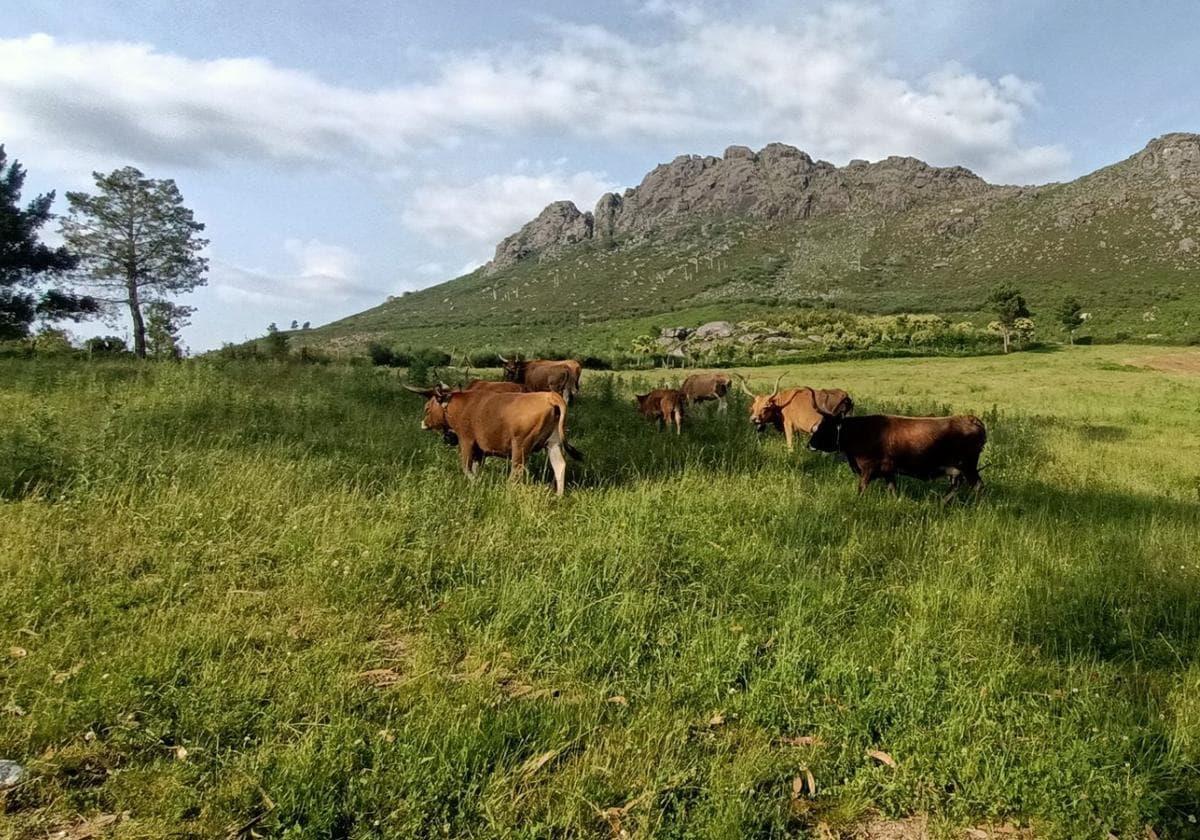The brigades of cows, sheep and goats helping to fight forest fires in Spain
The animals are being called upon in the north of the country to limit the amount of combustible fuel in the event of a forest fire
Raquel C. Pico
Galicia
Monday, 15 July 2024, 20:07
In 2017, a forest fiere burned in the Montes de Vincios area, in the southern Galicia region of Spain and devastated 80% of the land, one of the most serious of the four blazes that has ravaged it since 2013.
This sparked the Vincios Vede project; a local initiative that serves as an example of how grazing is as preventive against fires as any other measure.
José Taboada, coordinator of the initiative, said the local community started by regenerating the forest, reducing invasive species such as eucalyptus, opting for hardwoods and other local tree species and creating a "mosaic forest". They wanted it to be a source of biodiversity, of clean air, but also much stronger against threats. To do this, they needed to keep it clean and there was no option better than a herd.
They thought of many species, but ended up deciding on the cachena cow, native to the south of Ourense and the north of Portugal. The fact that it is a fairly self-sufficient species, it is accustomed to the land and it is a "neighbour" were the main points in its favour. The fact that they are in danger of extinction also played a role, Taboada added. The cows are now in the process of being introduced into the bush - where they will be grazed virtually - and will soon begin their "new professional career".
"The idea is to clear the undergrowth and let the cows maintain it," said Taboada. You can't just leave a cow in the middle of a thicket, he pointed out, and expect it to leave it clean. But it is feasible that once the clearing work has been done, the animal can take care of its maintenance.
On the rise
These cows are not alone. What they are going to do is silvopastoralism, which, as pointed out by the CREAF is the grazing of forest areas for a mutual benefit. Herds of animals use forest resources to feed themselves and in doing so control the vegetation and limit the fuel in the event of a fire. In Catalonia, according to the centre's calculations, herds of widely varying sizes (from 25 to 200 head) are already grazing in this way, and are sources of meat. Some 70% of Catalan silvopastoralism is carried out in protected natural areas.
Cows, goats and sheep are, as they are popularly called, also firefighters. It is a name that Víctor Gil, a technician of the project The Fire Herds of the Pau Costa Foundation, does not like. "We are working on prevention and the firefighters work on extinguishing," he said. These animals don't go around putting out fires, but "they create forest structures that don't favour fires". "We try to ensure that the resulting forest does not have the elements that then feed the big fires, those that fire brigades find difficult to control."
The Fire Herds project started in 2016 in collaboration with Catalan firefighters and, in particular, with the extensive livestock farms in the area, which provide the sheep, goats and cows needed to make it work. First it was in Girona, but they are now in all four Catalan provinces, demonstrating their high potential.
The species chosen is logical. "They are the animals that have historically entered the forest," said Gil. The growth of the forest in the Mediterranean is explained by its disappearance, as is the fact that the landscape "has become homogenised". By not having goats or sheep clearing land, open spaces, which are also important for biodiversity, have been lost. This is, for example, where the butterflies live.
More than preventing fires
This is another of the keys to this type of project. It is not only about preventing fires, but also about recovering landscapes, reconnecting with the environment and making the work of extensive livestock farming more visible. In Catalan supermarkets you can already find products with the distinctive silvopasture labels, making it clear to shoppers that the animals that have produced these yoghurts or cheeses have been clearing the forest.
In Vincios, the cachena cows are another part of the committee's attempt to recover the forest - they have also added beekeeping - and to make the public aware of the area.
There are also financial benefits, as clearing the land is much cheaper when sheep, cows or goats do it compared to using machinery on a regular basis. "Apart from the money you save, you add other values such as population fixation, food production and biodiversity," said Gil.
An exportable model
"It is a generalised problem in the Mediterranean context", Gil said when asked if the idea can be adapted to other places. In fact, these initiatives are an example, but not the only ones. In Madrid or in the Canary Islands, to add two other areas, sheep or goats are used to keep green spaces clean. In recent weeks, 70 goats have been in charge of clearing vegetation in El Rosario, Tenerife, a somewhat peculiar forestry brigade.
